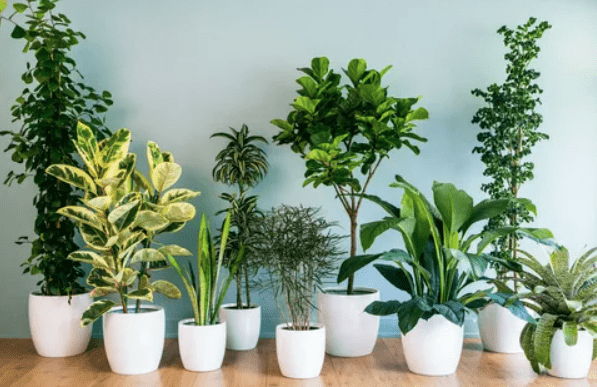Money Plant
(Pothos, Aureum)
Common name: Money plant , Phothos
Scientific name: Epipremnum pinnatum, Scindapsus aureum,
Variety: Aureum
Family: Araceae
Introduction
Originating from the Southeast Asian forests, this climbing plant features leaves that can reach a length of up to 100 cm. Renowned for its simplicity in care, it holds a universal reputation as one of the easiest houseplants to manage.
Leaves
These slender climbers have thick leaves which are green with yellow spots. When the plant exhibits reduced green pigmentation in its leaves, it signals a need for increased light exposure. The color of the leaves undergoes a transformation when the plant is relocated to areas with varying light intensities. In darker settings, the leaves assume a greener hue, while in brighter spots, they become lighter and more vibrant in color.
Habitat
Despite its tropical nature, this plant exhibits tolerance for dry and relatively dark environments. During winter, it can thrive in cooler rooms and doesn’t necessitate direct sunlight. While it can survive in shady spots but prefers some level of light. It’s worth noting that placing the plant in a draughty spot increases the likelihood of pests.
Money Plant Benefits
1. Good Luck
Having a Pothos plant at home or in the workplace is believed to attract good luck . These types of Money Plants are believed to positively influence the environment and bring about positive energy.
2. Heart-Shaped Leaves
The heart-shaped leaves of the Pothos plant resemblance to coins, symbolic to wealth and prosperity.
3. Air-Purifying Qualities
Pothos have air-purifying properties, making it a favored option for indoor decor. It is also believed to bring positive energy and harmony to its surroundings.
4. Release toxins
The Money Plant possesses air-purifying abilities, effectively cleansing the surrounding air by absorbing harmful toxins released from appliances such as air conditioners and refrigerators. This plant contributes to an energized home environment by filtering the air and increasing oxygen levels.
5. Release stress
The money plant have ability to promote mental well-being by calming the mind and alleviating stress. It reduces anxiety and sleep disorders, creating a positive atmosphere. Placing a money plant in your bedroom and living room is recommended to help prevent these mental health issues.
6. Gifting for Prosperity
The Pothos plant is frequently given as a gift during housewarming ceremonies and other occasions as a symbol of good wishes for the recipient’s financial success and happiness. It conveying well-wishes and positive vibes.
7. First 5 leaves symbolize five elements
The Money Plant is often viewed as a symbol of luck, believed to bring wealth, health, happiness, and a positive ambiance to the home. The initial five leaves of the Money Plant are thought to represent the five elements: metal, wood, water, fire, and earth. These elements are seen as powerful forces that attract prosperity to the owner of the plant.
8. Cultural and Traditional Beliefs
It’s important to recognize that the belief in Pothos’ money-attracting properties is rooted in cultural and traditional practices rather than scientific evidence. Nonetheless, the enduring popularity of Pothos as a “Money Plant” persists, driven by its positive symbolism and widespread appeal. The plant is admired for its lush foliage and easy-care characteristics, contributing to its widespread admiration.
Why you should grow money plant
- Remarkably adaptable.
- Low-maintenance plant.
- Quick to recover.
- Tolerant of neglect.
- Versatile growth in various forms.
- Symbolizes positivity, good luck, and prosperity for your home.
- Offers the opportunity to enhance your home decor uniquely.
How to Grow the Money Plant
Planting
To accelerate the growth of a money plant, allow the plant to develop roots in water, indicating a faster growth phase. Once the roots have matured, transplanting the plant into soil becomes a preferable choice for further development.
Watering
Ensuring proper watering is a crucial element when looking for tips to enhance money plant growth. To avoid potential harm from overwatering, it’s essential to allow the soil to dry out between watering sessions. During the summer, a watering frequency of every 7-10 days is recommended, while in the winter, watering once every 2-3 weeks proves to be sufficient.
Light
Placing the money plant near a window allows it to grow towards the light, as it thrives in solar colors and has a fondness for sunlight. Utilizing natural daylight by positioning it near a window contributes to faster growth. Observing the money plant reaching towards the sunlight enhances the overall experience and adds to the enjoyment of watching its growth.
Pot Selection
When opting to cultivate a money plant indoors, selecting a small pot is crucial, as the plant’s growth is directly influenced by the choice of the pot. Alternatively, planting it directly in soil can enhance its growth. To promote quicker growth, placing the potted plant on the balcony or patio is recommended. Keeping this tip in mind will contribute to faster growth of the money plant.
Fertilizer
Nitrate-based fertilizer is beneficial for the money plant. It’s important to note that fertilization during the summer is unnecessary as the plant’s growth naturally slows down during this season. Before applying fertilizer, ensure that the soil is damp. Following these guidelines will help in maintaining the health and growth of the money plant.
Climbing Up
Money plants naturally have a tendency to climb, and aiding this climbing process can promote faster growth. Adding plastic or glass poles to support the plant’s ascent is a helpful technique. Incorporating ropes or tying the stems until they reach the pinnacle allows for controlled climbing. Assisting the money plant in climbing properly is an essential tip for faster growth, as climbing is a crucial aspect of its growth process. Providing such support ensures that the plant experiences optimal growth.
Pruning
Remove the dead or overgrown branches so the new, fresh branches will come. So, it is recommended to cut the dead and overgrown branches of the money plant
Best Varieties of money plant for indoor/out door/ garden
1. Golden Pothos

Golden money plant is one of the most common Types of Money Plant. It have variegation, heart-shaped green leaves with golden-yellow streaks.
2. Marble Queen Pothos
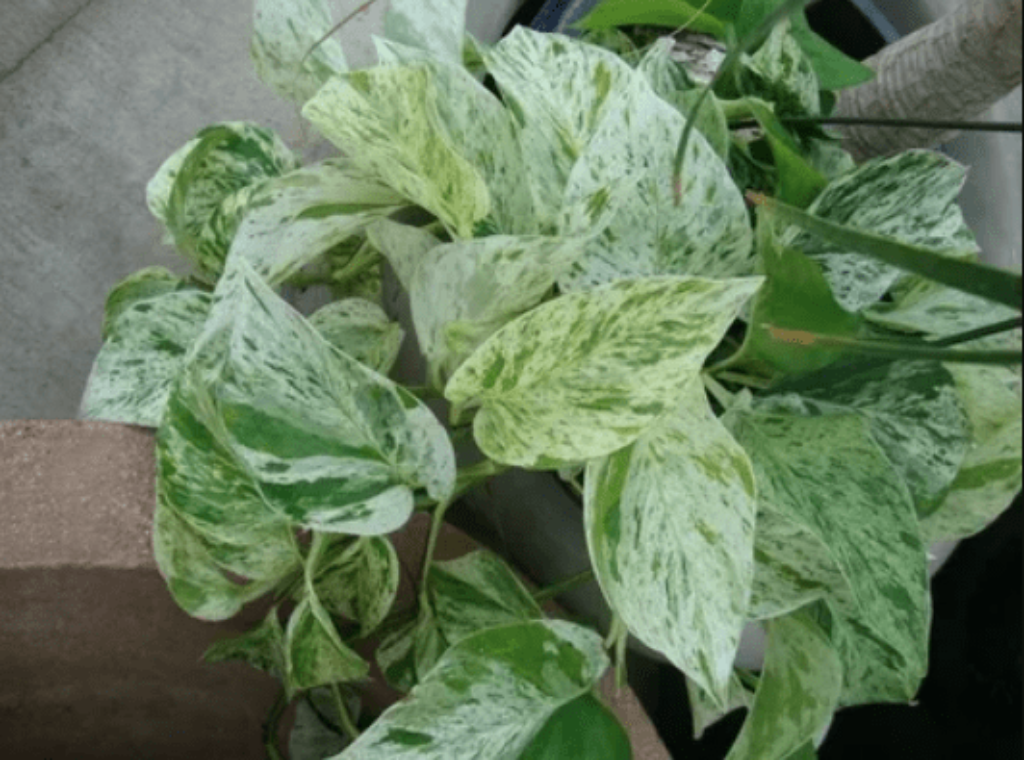
Marble money plant have glossy leaves with green and white marbled variegation.
3. Neon Pothos

Its have bright neon green color, leaves
4. Jessenia

This variety have deep green leaves with a golden-yellow variegation.
5. Manjula Pothos

The Manjula Pothos, have variegated leaves are primarily green with patches of creamy white and silvery-gray, creating a striking and eye-catching pattern. As a trailing vine, the Manjula Pothos gracefully drapes over containers.
6. N’Joy Pothos
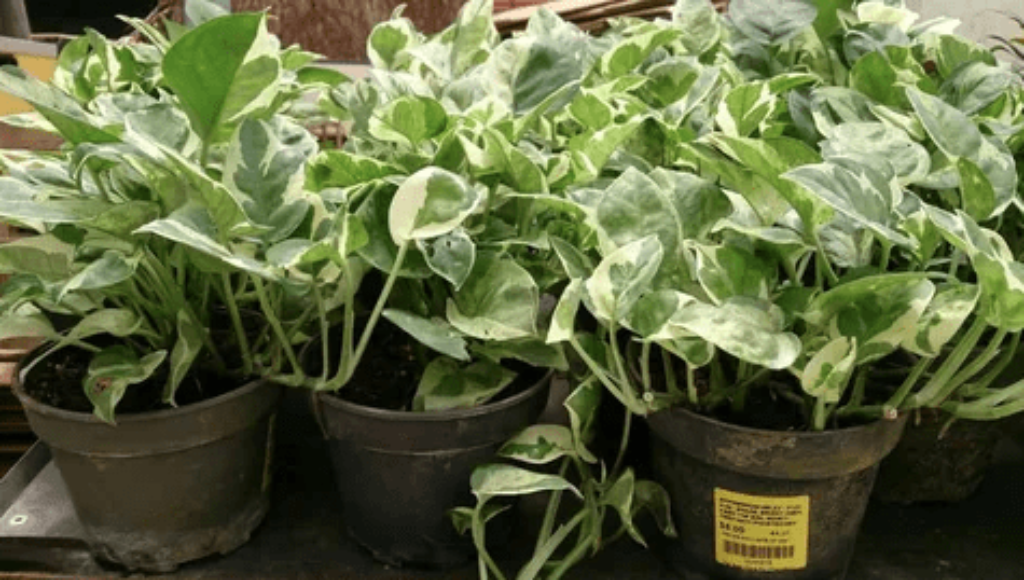
It have heart-shaped leaves with striking variegation, with patches of creamy white and silvery-gray. The variegation can vary from leaf to leaf.
7. Jade Pothos

Jade Plan have thick, fleshy leaves and its ability to survive in a different environments.It produce small, star-shaped flowers in clusters.
8. Pearls and Jade Pothos

A unique variety with green leaves speckled with white and cream-colored spots, adding interest to your different types of money plant collection.
9. Snow Queen Pothos

Features leaves with green centers and white-silver variegation, a wonderful types of money plant.
10. Silver Satin Pothos

The Silver Satin Pothos, have stunning silver-patterned leaves and trailing growth habit. Also referred to as the Silver Vine, this plant is known for its elegant foliage and ease of care, making it a popular choice for indoor gardens and spaces.
11-Silver Splash Pothos
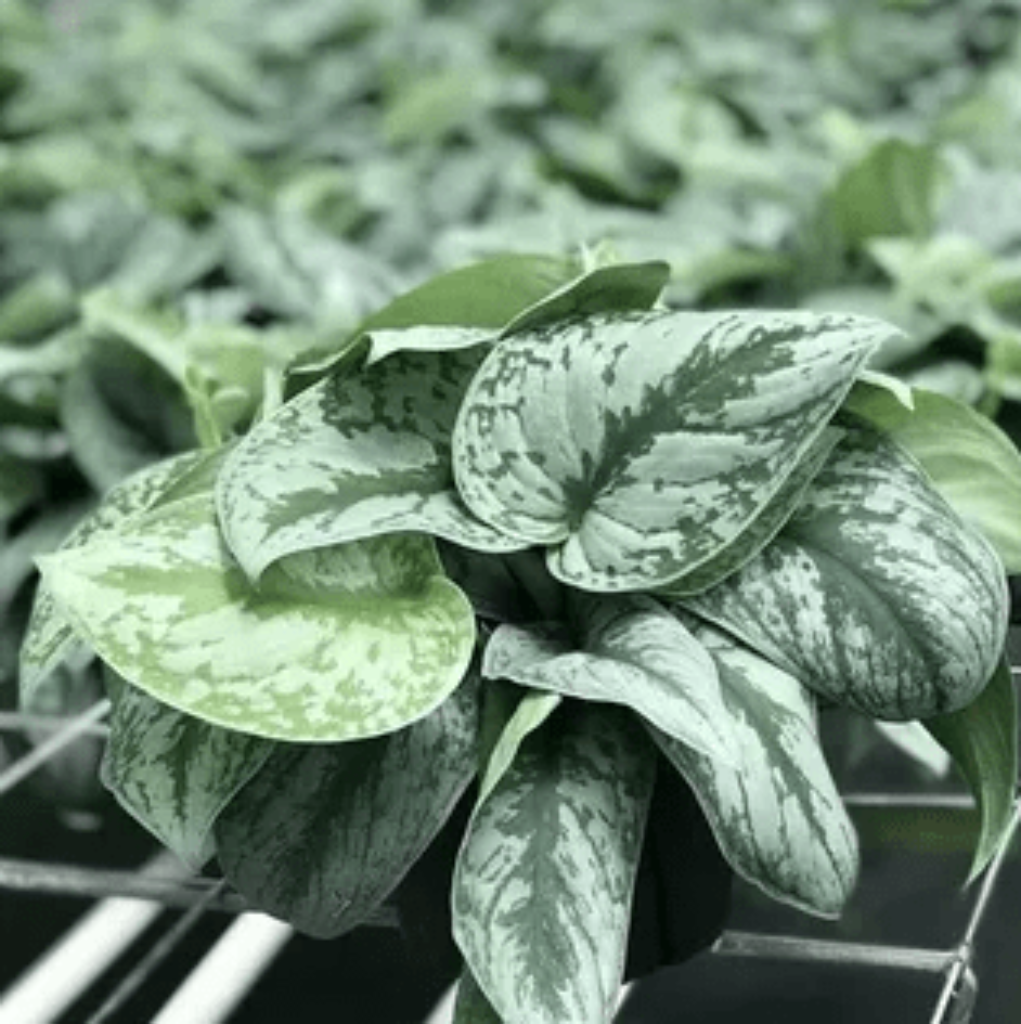
As the flowers fade, the seed pods develop into flat, round, translucent disks like coins.
12. Silk Pothos

Scindapsus or silk pothos have striking silver variegation on its leaves.
13. Cebu Blue Pothos

A cultivar with green leaves and striking splashes of creamy-white variegation, adding charm to your unique types of money plant collection.
14. Golden Dragon Pothos

This variety with golden-yellow variegation, creating a dragon-scale pattern..
15. Black Money Plant

The Black Money Plant have dark green and silver variegated leaves. It need minimal care.
16- Swiss cheese money plant (Epipremnum aureum ‘Swiss Cheese’)

This plant is a fusion of Swiss Cheese Plant (Monstera deliciosa) and Money Plant (Epipremnum aureum).
17.Tricolor Money Plant
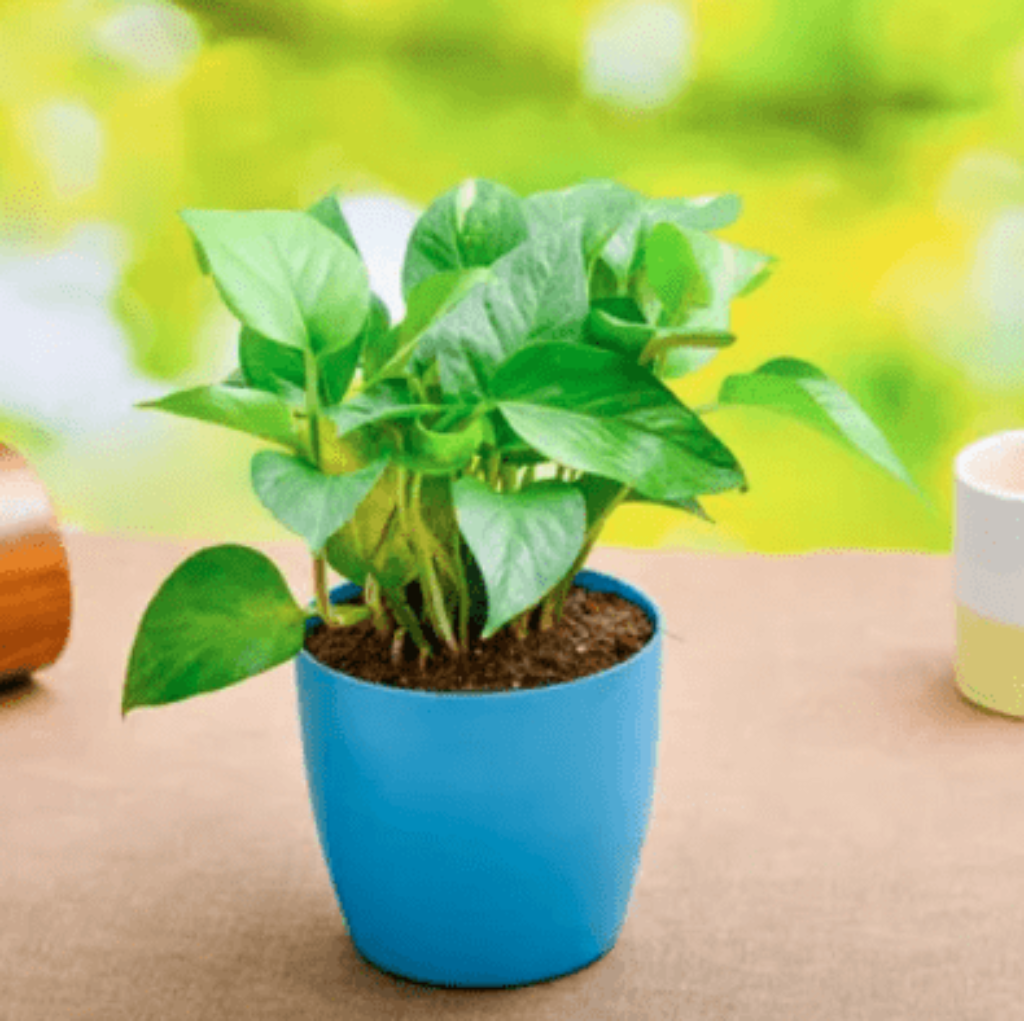
18. Chinese money plant

The Chinese money plant, also known as Pilea peperomioides,UFO, coin plant.It is a widely favored houseplant due to its charming coin-shaped.It require less care. This flowering perennial is indigenous to China, thriving naturally along the foothills of the Himalayan mountains.It is known for its distinctive foliage that produce small white flowers during the spring months.
Caring for a Chinese Money Plant:
Propagation
Chinese money plants are easily propagated, and a healthy plant tends to produce numerous offshoots that can be separated to create more plants. This characteristic has earned it the nickname “friendship plant.”
Soil
Plant the Chinese money plant in rich, well-draining soil. A high-quality organic potting mix that is peat-based or coir-based works best.
Light
The plant thrives in bright light conditions, and it’s healthiest and most attractive when grown in such environments. Avoid harsh, direct light as it can lead to leaf burn. Regularly rotate the plant to maintain a symmetrical appearance.
Water
Chinese money plants have moderate water needs. The leaves of Pilea peperomioides will start to droop when the soil dries out, serving as an indicator that it’s time for watering.
Temperature and Humidity
The Chinese money plant is well-suited to average household temperatures and humidity levels. Avoid excessively dry conditions and keep the plant away from heating vents. While hardy to freezing temperatures, it’s advisable to avoid exposing it to temperatures below 50 degrees Fahrenheit (10 degrees Celsius) when kept indoors. However, a brief period of cold exposure in the winter might encourage blooming.
Feeding: Provide some light feeding in the spring and summer months to support the plant’s growth.
Money Plant Price in Pakistan
In Pakistan, money plants are readily available in nurseries, and their prices vary based on factors such as size and type. The cost can increase if the plant is potted in aesthetically pleasing containers. Generally, money plant prices range from 250 to 1000 Pakistani Rupees.
While money plants can be easily propagated, it takes some time for them to flourish. The choice of purchasing a well-established plant or starting with a branch depends on individual preferences and requirements.
For those looking for a flourishing plant for their office, there are options to acquire a well-established plant with all the necessary arrangements. On the other hand, if you are interested in starting your own gardening journey, you can consider taking a branch from a neighbor’s existing plant to kickstart your own money plant cultivation.
Common Money Plant (Pothos) Problems and Solutions:
Leaves Losing Color
Problem
Insufficient light. Place the plant in a location with bright, indirect sunlight.
Solution
Ensure proper exposure to light. New leaves that start solid green may become variegated as they age.
Yellow Leaves
Overwatering cause yellowing of leaves.
Solution
Allow the soil to dry out between waterings to prevent root rot.
If stems turn yellow due to root rot, propagate healthy stem cuttings for new plants. Discard the affected plant and soggy soil.
Brown or Yellow Older Leaves
Problem
Underwatering. Trim back affected stems to encourage new growth and increase watering.
Solution
Water the plant adequately.
Pale or Brown Leaves
Problem
Too much light. Move the plant to a location with less intense light.
Blackened Leaves or Stems:
Problem
Overwatering and root rot. Cut off affected branches, allow soil to dry, and encourage new root growth. In severe cases, discard the infected plant and soil to prevent further infection.
Yellow, Wilted, or Brown Edges on Leaves
Problem
Underwatering. Increase watering as needed.
Blackened Leaves and Little Growth:
Problem
Cold temperatures. Move the plant to a warmer location, trim affected growth, and wait for new growth.
Pests
Solution
Use neem oil, salty water spray, wipe leaves with alcohol-soaked cotton ball, or apply insecticidal soap.
Leggy Stems
Solution
Trim stems longer than 4 ft (1.2 m) occasionally to maintain a leafy appearance. Cut off mostly bare stems at the soil level.
Fungus
Solution
Avoid overwatering to prevent wet soil attracting fungus gnats. Allow the soil to dry between waterings.

